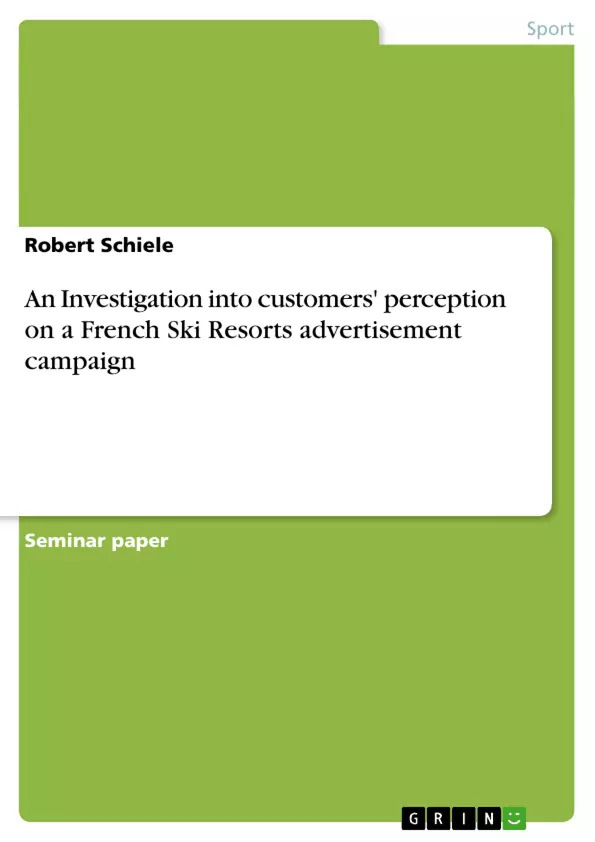Prior to World War I, skiing had already established itself as a leisure activity and as
an integral part of winter sports tourism (www.kokotele.com). In Scandinavia and the
central European alpine states, skiing evolved as an industry around 1890. The first
exhibition of winter sports equipment was held in Muerzzuschlag in Austria in 1894,
two German and 14 Austrian manufacturers put their products on display
(www.land.heim.at). Also around this time the first international skiing, crosscountry
and ski jumping championships took place. The winter sport industry in
particular the skiing industry obtained a tremendous boost through the first winter
Olympics, held in Chamonix in 1924 (www.olympic.org/uk).
With growing prosperity of European countries in the late fifties, the skiing industry
developed into an important part of the leisure and tourism sector. These days whole
regions are dependent on ski tourism and it provides many jobs for people in
mountainous areas (www.skimuseum.net). These days Europeans go for vacation
rather than recreation, and skiing is as much a social as a sporting activity (Lennon,
1997). The recent emergence of snowboarding has contributed to the ski tourism industry,
attracting many youngsters to ski resorts (Marzella, 2001). Snowboarding as a sport
was invented through surfers in the 1960`s who fixed bindings on to modified
surfboards. As the yuppie age ended and the “Generation X’ers” began to get into
skateboarding, BMX bikes, bungee jumping, and roller blading., snowboarding took
off (Reichenfeld & Bruechert, 1995). By the late 1980`s, rapid growth in the sport had
been tipped into motion by a number of important catalysts. Effective technical
innovations and the formation of a world professional tour (backed by enthusiastic
media) were the main factors in widening the sports commercial market and creating
what is now an established and vibrant industry. However, many ski resorts still treat
snowboarding as a secondary market, although it must be added, that by 1996 97% of
all ski resorts “welcomed” snowboarders (Marzella, 2001). Through the increased
popularity of snowboarding over the last 10 years, it is inevitable that some resorts
would develop a strong attraction for boarders (Lennon, 1997). [...]
Inhaltsverzeichnis (Table of Contents)
- Introduction
- Literature Review
- Method
- Rationale for Triangulation & Research Design
- Results
- Descriptive Statistics
- Discussion
- Conclusion
- Limitations of Study
Zielsetzung und Themenschwerpunkte (Objectives and Key Themes)
This project aims to fill a gap in existing literature regarding the perception of ski resort advertising campaigns by individuals of different nationalities and winter sport backgrounds. It examines how these groups perceive the marketing efforts of Chatel, a smaller ski resort in the French Alps, in relation to the findings of Marzella (2001), Gebhart (2002), and Papadopoulos (2001).
- The impact of cultural values on the perception of advertising campaigns.
- The differences in perception between skiers and snowboarders.
- The effectiveness of marketing strategies employed by smaller ski resorts.
- The challenges and opportunities of attracting international tourists to ski resorts.
- The importance of providing a comprehensive mountain experience beyond skiing and snowboarding.
Zusammenfassung der Kapitel (Chapter Summaries)
- Introduction: This chapter provides a brief historical overview of the development of the ski tourism industry, highlighting the emergence of snowboarding as a significant contributor. It also notes the challenges faced by smaller resorts in attracting tourists in a competitive market.
- Literature Review: This chapter explores relevant literature on the marketing strategies of ski resorts, focusing on the need for smaller resorts to internationalize their marketing approach and cater to the diverse needs of both skiers and snowboarders. It also discusses the importance of providing a comprehensive mountain experience and utilizing multi-lingual websites to reach an international audience.
- Method: This chapter outlines the rationale for the research design and the use of triangulation to ensure the validity of the findings. It likely details the specific methods and data collection techniques employed in the study.
- Results: This chapter presents the descriptive statistics gathered from the research, providing insights into the data and the patterns observed. It may include graphical representations or tables to illustrate the findings.
Schlüsselwörter (Keywords)
This study explores key themes related to the marketing of ski resorts, specifically examining the perception of advertising campaigns by different nationalities and winter sport enthusiasts. It focuses on the challenges faced by smaller resorts in attracting tourists, the need for internationalized marketing strategies, and the importance of providing a comprehensive mountain experience. The study utilizes data from various sources, including questionnaires and observations, to analyze the impact of cultural values, the differences in perception between skiers and snowboarders, and the effectiveness of marketing techniques employed by ski resorts.
- Arbeit zitieren
- Robert Schiele (Autor:in), 2002, An Investigation into customers' perception on a French Ski Resorts advertisement campaign, München, GRIN Verlag, https://www.hausarbeiten.de/document/27572


